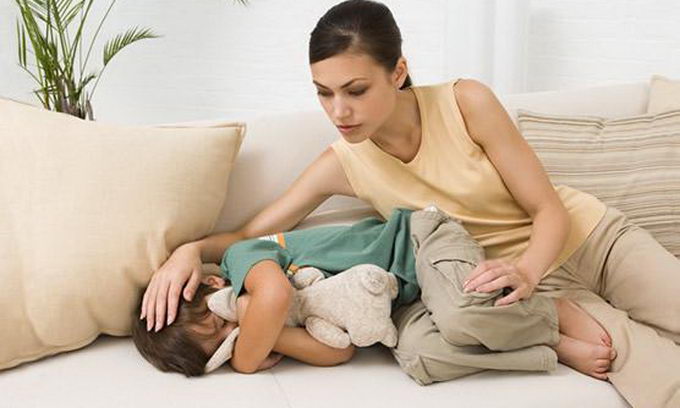Instruction
1
Put the child on the back and spend palpation (feeling) of the abdomen. Starting from the left iliac region, move counterclockwise. Symptom of appendicitis is increased pain at palpation in the right iliac region. This feature is very important. In medical practice, he received the name of local tenderness.
You can try to see your child during sleep. Then on palpation of the lower right square of the belly appears a symptom of the repulsion is repulsion hands exploring hand of a sleeping child.
You can try to see your child during sleep. Then on palpation of the lower right square of the belly appears a symptom of the repulsion is repulsion hands exploring hand of a sleeping child.
2
The second major symptom is inflammation of the protective muscle tension in the lower right square of the abdomen. To determine this condition, put your hands on the baby's stomach (the left - to the right iliac fossa and the right to the lower left square belly of the patient). Wait for breath and alternately press left and right. Thus, try to determine the difference in muscle tone.
3
Now it is necessary to determine the presence of symptom Shchetkina—Blumberg. Deep gradually apply pressure on the anterior abdominal wall. Then quickly and abruptly take away the hand. For positive symptom, your child will experience sharp pain, arising immediately after you took your hand off of the abdomen.
4
Remember, the child's body for any inflammation reacts by increasing temperature. In appendicitis, the reaction temperature is usually not more than 37-38 degrees. Pay attention to the relationship between heart rate and body temperature. When the temperature rises by 1 degree Celsius pulse rate increases by 10 beats per minute. And inflammatory process in the abdominal cavity, the heart beats more often.
5
Keep in mind, when appendicitis may change the child's behavior. In many cases, parents noted that children are capricious, malkontentigi, restless and lethargic. This is due to the increase of pain. The continuity of pain leads to sleep disorder (it occurs in one third of patients).
6
Have 6-8 children out of 10, when inflammation of the appendicitis and vomiting are observed. Very rarely vomiting is persistent.
7
If your child is showing signs of the disease put him in the bed. You should call a doctor immediately. Remember not to hurt the baby, you should not do the following:
- Don't put on a stomach warmer. This can lead to rupture of the Appendix and peritonitis, because heat accelerates the development of inflammation.
- Do not give any medication. They can lubricate the clinical picture of the disease (to reduce the intensity of the inflammatory process, remove or reduce pain, etc.). Then the correct diagnosis will be difficult.
- Feed, or give drink to the patient. If necessary surgery that is performed under General anesthesia, stomach contents may get into the respiratory tract. To prevent this the child will need to wash out the stomach, and this is a difficult and unpleasant procedure.
- Don't put on a stomach warmer. This can lead to rupture of the Appendix and peritonitis, because heat accelerates the development of inflammation.
- Do not give any medication. They can lubricate the clinical picture of the disease (to reduce the intensity of the inflammatory process, remove or reduce pain, etc.). Then the correct diagnosis will be difficult.
- Feed, or give drink to the patient. If necessary surgery that is performed under General anesthesia, stomach contents may get into the respiratory tract. To prevent this the child will need to wash out the stomach, and this is a difficult and unpleasant procedure.
Note
Children under 3 years is dominated by General symptoms - fever, diarrhea, vomiting.
Useful advice
At the slightest suspicion, call an ambulance. In children, the disease occurs rapidly, so that the condition of peritonitis may develop immediately after the first complaints.
